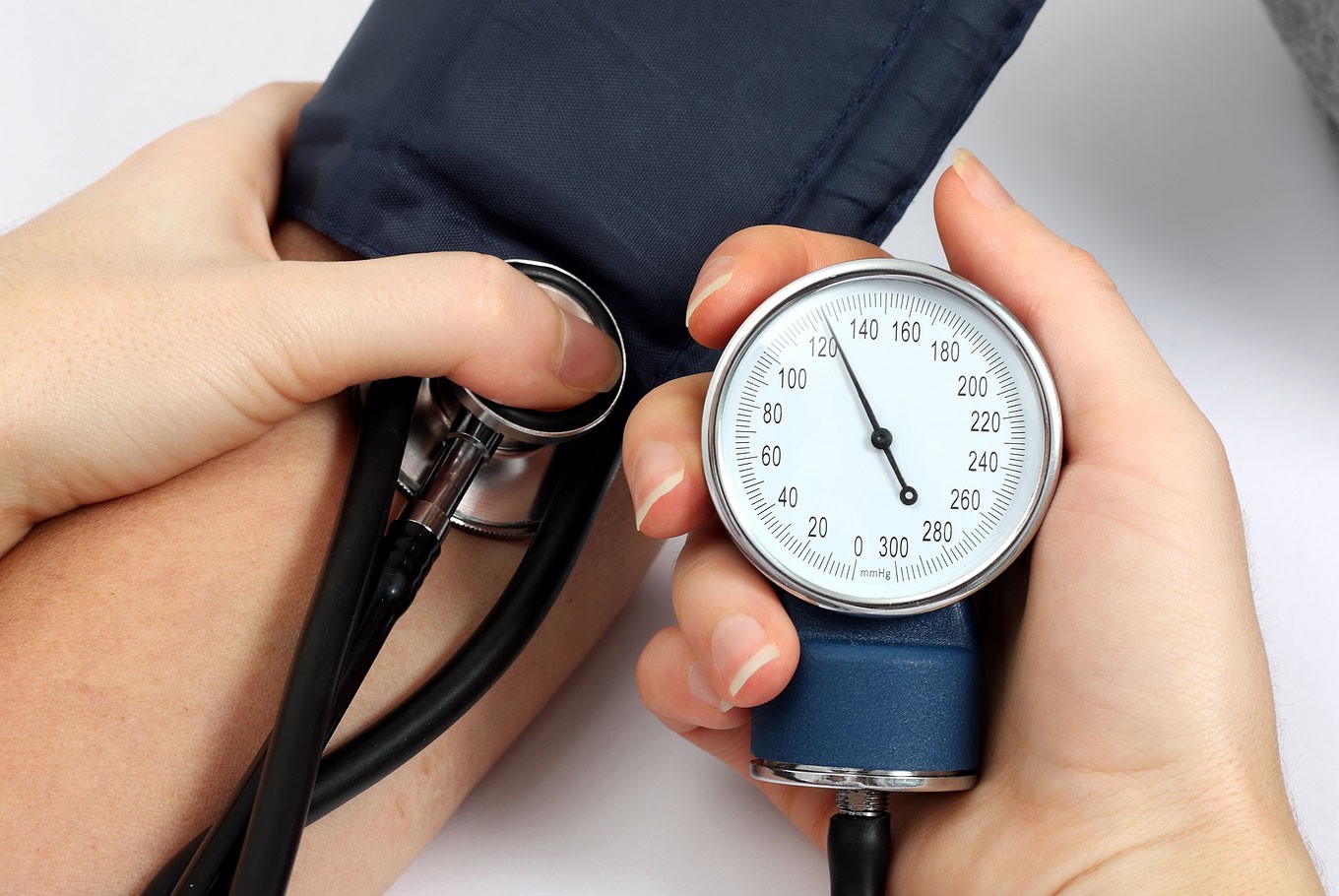Popular Reads
Top Results
Can't find what you're looking for?
View all search resultsPopular Reads
Top Results
Can't find what you're looking for?
View all search resultsKeeping hypertension under control during COVID-19 pandemic
Checking one's blood pressure is particularly important since it links to other comorbidities contributing to the severity of COVID-19.
Change text size
Gift Premium Articles
to Anyone
A
o:p>A while ago, when the daily COVID-19 case number peaked in Indonesia, many people were busy looking for a pulse oximeter. People believed the device that measures the oxygen saturation in red blood cells and the heart pulse could also detect a coronavirus infection.
It was not the wrong thing to do. In the middle of the pandemic, every person has a responsibility to protect themselves, their family and other people they interact with against the deadly virus. As we know, based on data from www.worldometers.info, more than 40 million COVID-19 cases have been registered in the world, with more than 1 million deaths.
The number of deaths caused by COVID-19 so far this year is higher than the number of deaths caused by malaria (405,000) in the whole year of 2018, HIV/AIDS (690,000) in the whole year of 2019 and suicide (800,000) every year. In Indonesia alone, the case number has reached more than 360,000 and the death toll exceeds 12,000.
However, many people forget that the severity and death rates of COVID-19 are closely linked to a health problem that almost a third of the Indonesian population suffers from: Hypertension. According to the Basic Health Survey (Riskesdas), the number of people with hypertension in Indonesia reached 63 million or 34.1 percent of the population in 2018, up from 25.8 percent in 2015.
The link between hypertension and COVID-19 deaths has been revealed by the European Society of Cardiology (ESC). In a June 5, 2020, press release the ESC said researchers in China and Ireland had analyzed data from 2,866 patients with COVID-19 who were admitted to Huo Shen Shan hospital in Wuhan, China, between Feb. 5 and March 15 and found that 29.5 percent (850) had a medical history of high blood pressure (hypertension).
Meanwhile, on June 25 the National Center for Biotechnology Information (NCBI), which is part of the United States National Library of Medicine, also highlighted a metadata analysis by Research Square from Jan. 24 to March 16, showing that hypertension is the biggest comorbidity factor in COVID-19 patients, with a rate of 15.8 percent, followed by heart disease (11.7 percent) and diabetes (9.4 percent). Ironically, heart disease and diabetes are closely related to hypertension. Hypertension is a risk factor for several organs, including the heart, and diabetes is one of the triggers of hypertension.
Indonesian doctors have stated that hypertension is the main comorbidity factor for COVID-19. According to covid19.go.id data, half of the total COVID-19 positive patients and 13 percent of patients who died had hypertension.
According to the secretary-general of the Indonesian Society of Internal Medicine (PAPDI), Eka Ginanjar, people with hypertension are more prone to contracting COVID-19, because their blood vessels are not in a good condition, so their bodies' mucosal layers are not strong enough to prevent infections.
Therefore, the Indonesian Hypertension Association (InaSH)'s CERAMAH initiative of aggressively campaigning for people to check their blood pressure at home since 2018 deserves appreciation and is getting even more important during the pandemic. According to the InaSH, correct and routine blood pressure checks at home will show the real blood pressure compared to occasional blood pressure checking at the hospital/clinic. Blood pressure checking at home will also increase patients' compliance with taking their medicines, a patient's active participation in recovery.
What is the ideal blood pressure? According to InaSH, a normal blood pressure is when a home reading shows a systolic/diastolic under 135/85 mmHg. Anything above that number is considered hypertension. Systolic pressure (the first number) indicates how much pressure a person's blood is exerting against the artery walls when the heart beats, while diastolic blood pressure (the second number) indicates how much pressure a person's blood is exerting against the artery walls while the heart is resting between beats.
Therefore, during the pandemic, checking blood pressure and making sure our blood pressure is within the normal range is as important as measuring the oxygen saturation level, which has become a trend in Indonesia. Checking blood pressure is even way more important since it links to other comorbidities contributing to the severity of COVID-19.
Of course, people should not forget about the health measures recommended by the government, such as conducting routine safe exercise, consuming high-nutrient food and vitamins to boost immunity.
One more thing: We should be prepared to be highly patient and follow the above best practices consistently to prevent COVID-19 infection. According to the World Health Organization, the pandemic would last at least one year, and the world will not be entirely safe before a proven COVID-19 vaccine is distributed globally.
-- The writer is the director of OMRON Healthcare Indonesia.










